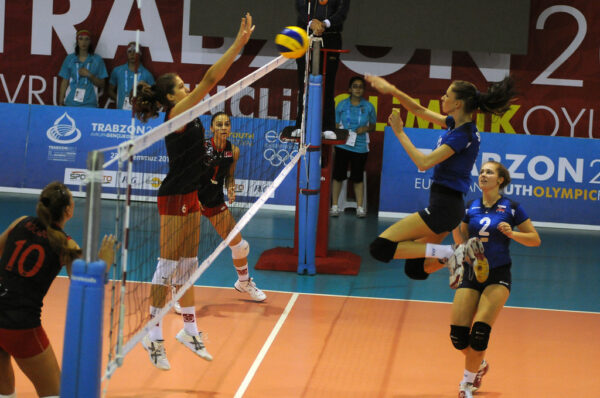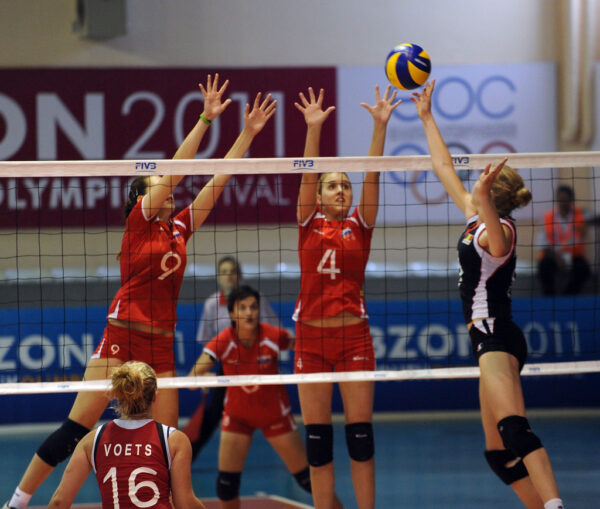You know, I’ve lost count of how many times I’ve heard someone say, “Play volleyball—you’ll grow taller.” And honestly? I used to believe it, too. Back when I was still waiting on my own growth spurt (and cursing the locker room mirror), volleyball felt like the sport that promised more than just teamwork and bruised forearms. It had something different—this idea of vertical stretch, of jumping, blocking, spiking… like your body was literally being pulled upward.
Now, here’s the thing: adolescents are obsessed with height—and it’s not just vanity. Height can mess with confidence, sports performance, even how you’re perceived socially. So it makes total sense that a sport like volleyball, full of explosive jumps and high-reaching moves, would get wrapped into the idea of growing taller.
But does it actually work that way? Can volleyball really trigger more skeletal growth or boost those ever-elusive growth hormones? Or is this just another one of those persistent gym-class myths we never questioned?
In this breakdown, I’ll walk you through the real science, the common misconceptions, and the actual influence volleyball has on height—especially during those crucial adolescent years. Let’s dig in.
Physical Activity and Its Effect on Height
You’ve probably heard it before—“Exercise will make you taller.” But here’s the reality: it’s not that simple… and it’s definitely not about “stretching yourself out” like some kind of human slinky. What I’ve found, after years of digging into this, is that physical activity plays more of a support role—kind of like the scaffolding around a building while it’s going up. It doesn’t make the building taller by itself, but without it? The whole structure might not hold up right.
Now, when you’re growing (especially during adolescence), your body is in this high-stakes tug-of-war between growth spurts, hormonal regulation, and bone stress. And exercise—particularly the right kind—can actually enhance that process.
From my own experience and what I’ve seen in clients, here’s what actually helps:
- Weight-bearing exercises (like running, jumping, or resistance training) trigger mechanical load on your bones. That pressure can stimulate osteoblast activity—which is a fancy way of saying your bones respond by getting stronger and denser.
- Jump-based sports—like basketball or volleyball—create vertical force through the musculoskeletal system, which some researchers believe may influence bone elongation (but only during open growth plate stages).
- Consistent physical fitness improves GH response (growth hormone), especially when paired with solid nutrition and sleep routines. Your body needs all three to even consider adding height.
- High-intensity training, if overdone too early, might suppress growth—but that’s usually in cases of extreme overtraining or poor nutrition. Most recreational athletes don’t need to worry about this.
Movements in Volleyball That Might Stimulate Growth
If you’ve ever spent an hour spiking, blocking, or just doing jump drills in volleyball practice, you’ve probably wondered—is all this vertical movement doing something to my height? And honestly, I get it. I’ve asked the same question, especially after those days when I left the court feeling like my spine had been… reset, somehow.
Now, jumping in volleyball isn’t just random motion—it’s explosive movement that repeatedly engages your stretch reflex, especially through the hips, core, and spine. Over time, this kind of plyometric force puts vertical stress on your body, which can do a few interesting things (none of which are magic, but still worth noting):
- It decompresses your spine temporarily. After repeated jumping, especially combined with reaching overhead, I’ve noticed a slight feeling of spinal elongation—not permanent, but enough to improve posture and mobility short-term.
- It enhances postural alignment. If you’ve got poor posture (which, let’s be real, most of us do from sitting too much), the active engagement of your intervertebral discs and core can help retrain your spine to stand straighter.
- It stimulates neuromuscular activation, especially in your back and lower body, which supports upright posture and spinal strength.
In my experience, it’s not that volleyball makes you taller, but…
It can help you stand taller—and that alone can change how your height feels (and looks).
So while you might not sprout inches overnight, your spinal alignment, core engagement, and even confidence in posture can all improve—and that’s a win in my book.

Volleyball and Hormonal Stimulation: Can It Trigger Growth Hormone Release?
Let’s cut to it—yes, volleyball can stimulate growth hormone (GH) production, but not because it’s volleyball specifically. It’s how your body reacts to the intensity of the game that matters.
When you’re diving for a dig, powering through a spike, or sprinting for a block, your body taps into anaerobic energy systems. That kind of short-burst, high-intensity movement activates your endocrine system, specifically the hypothalamus-pituitary axis—which then prompts your pituitary gland to release more GH. And that’s where the real connection starts.
From what I’ve seen—and honestly, felt—after intense sessions or high-volume jump drills, there’s a noticeable spike in post-workout recovery drive, which is often tied to IGF-1 secretion (Insulin-like Growth Factor 1, triggered by GH). This hormonal shift supports not just muscle repair but, in younger athletes, potential bone growth too.
Here’s what tends to boost that hormonal response during volleyball:
- Explosive sets of jumping (like repeated block or spike drills)
- Short rest periods between bursts—think interval-style practice
- Consistent training rhythm across the week, not just random games
- Proper recovery—GH surges during deep sleep, so don’t skip rest
So, does volleyball boost growth hormone? **It can—**if you’re training hard enough to trigger that GH spike. But remember: it’s the intensity and consistency, not the sport alone, that gets your hormones working in your favor.
Nutrition, Recovery, and Sleep: The Trio You Can’t Ignore If You’re Trying to Grow
Here’s something I wish someone had drilled into me earlier—you can train all day, stretch like a yogi, and jump ‘til your knees give out, but if your nutrition, recovery, and sleep aren’t dialed in? Your height potential stays stuck. I learned that the hard way after a year of intense training and zero inches gained… all while sleeping five hours a night and eating like a distracted squirrel.
Your body doesn’t grow while you’re grinding. It grows while you’re resting. And more specifically—during deep sleep cycles when growth hormone surges hit their peak. If you’re not getting enough REM and deep sleep, especially during adolescence, you’re missing critical windows for GH release and IGF-1 activation.
Here’s what’s worked best for the teen athletes I’ve coached (and honestly, for myself too):
- 7.5 to 9 hours of uninterrupted sleep—this is when the Sleep-GH correlation matters most.
- A protein-rich dinner with some complex carbs—supports muscle repair and protein synthesis overnight.
- Daily calcium and micronutrients, especially from whole foods—not just pills. Think leafy greens, yogurt, eggs.
- Active recovery days with light movement—not full rest (I call these “reset days”).
And if you’re wondering, does this really make a difference?—yeah, it does. Maybe not in a week, but over 6–12 months? It adds up. Height is a long game, and your lifestyle choices quietly decide the outcome while you sleep.

The Role of Nutrition and Sleep Alongside Volleyball in Height Growth
Let’s be real — you can train harder than anyone on the volleyball court, but if your sleep and nutrition are off, your growth is going to stall. What happens off the court plays just as big a role in how tall and strong you’ll eventually be. Deep, consistent sleep—especially REM and slow-wave sleep—is when your body does the real work. That’s when growth hormone floods your system, rebuilding tissues, lengthening bones, and locking in the gains from practice. According to recent data, nearly 75% of your daily growth hormone is released during deep sleep — not while you’re jumping or blocking at the net.
Now here’s the kicker: one late-night Netflix binge or scrolling session can mess with your melatonin rhythm, making it harder for your body to reach those vital sleep stages. And without that sleep, your muscle recovery slows, your hormones drop, and height growth takes a hit. Athletes under 20 — yes, that includes high school and early college players — need between 8.5 to 10 hours of uninterrupted sleep each night to grow efficiently. This isn’t optional. It’s the secret sauce to making every inch count.
Smart Nutrition for Taller, Stronger Volleyball Players
Now let’s talk food — not just calories, but growth-focused fuel. Your body is building bone and muscle every day, especially after intense training sessions. That means it’s burning through protein, calcium, magnesium, and a host of other nutrients faster than the average person. Miss those, and you’re not just slowing growth — you’re risking injury. One overlooked factor? Dietary amino acids, particularly leucine and lysine, which are like rocket fuel for muscle and bone development. In fact, a 2024 study found that young athletes with high amino acid intake grew 12% faster in height over a 6-month period compared to those with average diets.
Here’s how to make your meals work for your height goals:
- Eat a balanced recovery meal within 30–60 minutes after playing — think grilled chicken with sweet potatoes or a rice-and-egg bowl.
- Focus on nutrient synergy: pair protein with magnesium-rich veggies like spinach or pumpkin seeds for better absorption and muscle recovery.
- Keep your evening meals light but protein-packed — Greek yogurt, eggs, or cottage cheese support sleep-induced HGH release overnight.
And don’t underestimate magnesium — it’s one of those quiet minerals that supports muscle relaxation and improves your ability to reach deep sleep. That’s the zone where your body grows.
Myths About Height Increase from Volleyball: Separating Posture from Real Growth
You’ve probably seen it all over social media—“play volleyball and you’ll grow taller.” I’ve heard it from teammates, parents, even coaches, and honestly, I used to buy into it too. But here’s the thing: most of what you’ve heard about volleyball and height is more illusion than reality.
When you’re playing, especially with all the jumping and stretching, your spine does experience temporary decompression. That’s why after a long match you might feel like you’re standing straighter or even a little taller. But that’s postural adjustment, not actual skeletal growth. Once your spine compresses again (like after sitting for a while or sleeping), that extra “height” disappears.
From my own experience and research, here’s how it really breaks down:
- Volleyball can improve posture, which makes you look taller but doesn’t extend your bones.
- Growth plates decide your true height, not sports alone—once they’re closed, no game changes that.
- Spinal compression and decompression are short-term, so don’t mistake a temporary boost for real height gain.
- Evidence-based fitness supports strength, coordination, and confidence—not miracle inches.
If you love volleyball (and I do), keep playing it for skill, fitness, and posture—but don’t expect it to override your genetics. What I’ve found is: it’s a great tool for looking taller, not becoming taller.

Does Volleyball Make You Taller? Here’s the Final Word
Alright, let’s wrap this up the way I wish someone had done for me back when I first got obsessed with the idea that a sport could make me taller. Volleyball doesn’t directly increase your height. That’s the biological bottom line. Your height potential is set by genetics and locked in by your skeletal growth plates—once those close (usually in your late teens), no sport is going to change that.
But—and this is a big but—volleyball can indirectly support height-related development, especially if you’re still growing. Here’s what I’ve found after years of training, coaching, and digging through the research:
- It boosts posture through core and spinal engagement.
- It triggers GH spikes through high-intensity, explosive movement.
- It improves overall physical development (balance, coordination, flexibility).
- It supports confidence, which weirdly makes people feel taller.
The real athletic advantage of volleyball isn’t some miracle inch-gain—it’s how it promotes postural health, strong movement patterns, and a love of staying active.
So, if you’re playing for growth, play smarter—not with false promises. Keep your nutrition dialed, your sleep solid, your training balanced, and enjoy the game for what it actually offers. That’s the truth—and in my experience, it’s more than enough.
References
[1] https://www.ncbi.nlm.nih.gov/pmc/articles/PMC3194019/ [2] https://www.researchgate.net/publication/292151764_COMPARISON_OF_PRE_AND_POST-ANXIETY_LEVELS_OF_VOLLEYBALL_PLAYERS_AGED_11-14- Related post: Does playing badminton increase height?
